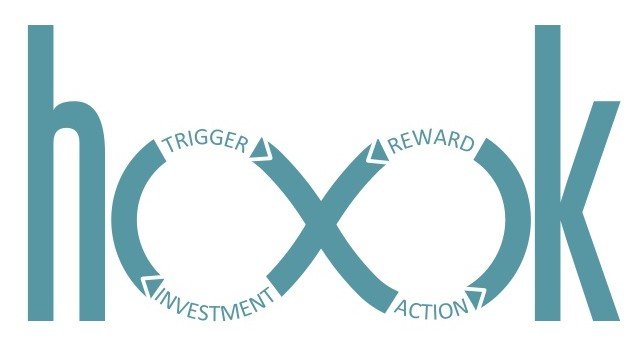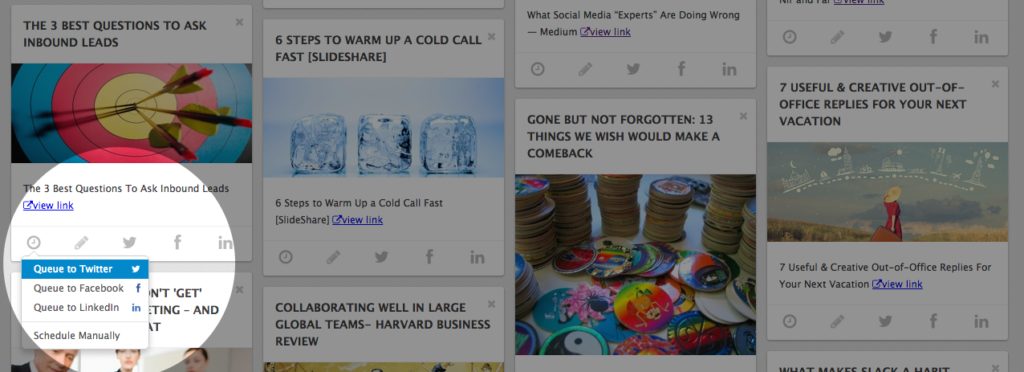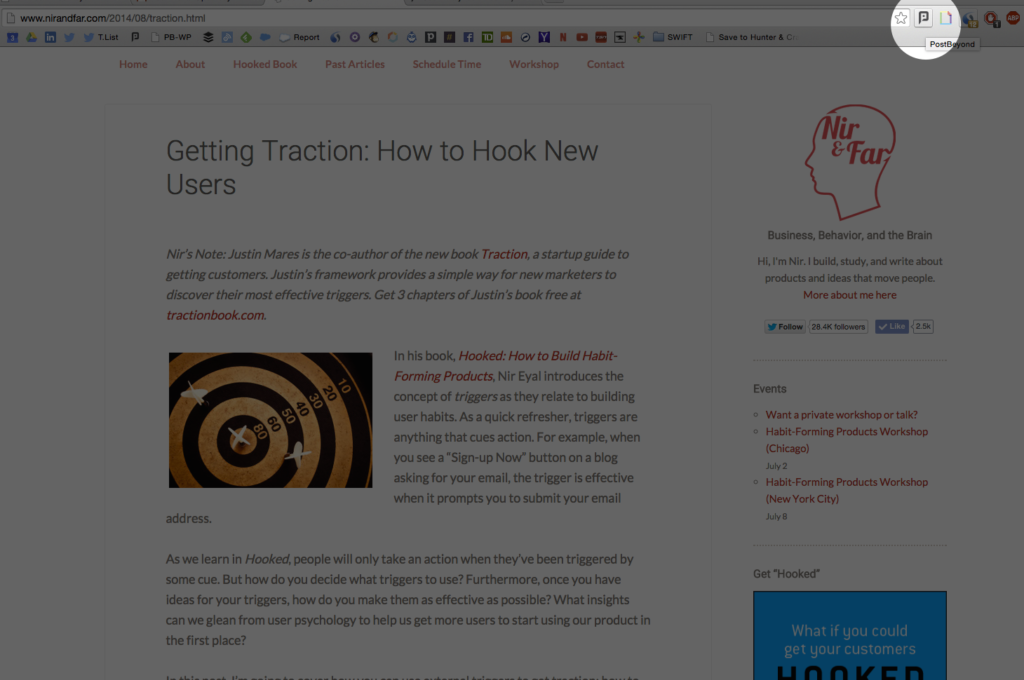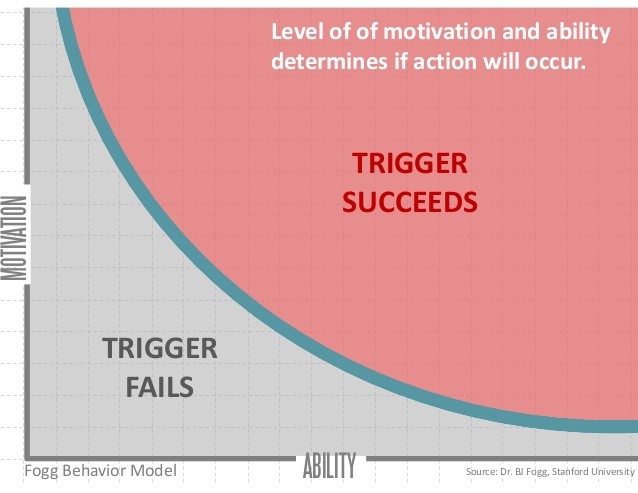At PostBeyond, we talk a lot about business transformation and how social media fits into modernizing the enterprise.
If you break it down, social media consists of three things: people, content, and technology.
Facts:
- Your people (employees) are active and influential on social media.
- Your employees are hungry for content.
- You (likely) have no technology to support them.
We see this all the time – your employees want to consume and share great content, and you want to empower them, but you simply don’t have the technology infrastructure to make it happen.
At PostBeyond, we help brands bridge the gap by working with them to develop comprehensive social business strategies. But one question remains:
How do we get employees hooked?
What is the Hook Model?
Over the past few months, I’ve gotten very interested in the work of Nir Eyal, a key thought leader in product psychology. Eyal analyzes high growth technology companies and how they create habit-forming products. To understand Eyal’s work, we need to lay out a few definitions:
A Habit is a behaviour done with little or no conscious thought.
The Hook is an experience designed to connect your user’s problem to your solution with enough frequency to form a habit. With successive passes through these hooks, we shape user’s preferences and build habits.

When it comes to building habit-forming products, Eyal talks about two types of triggers that keep users coming back:
External Triggers
An external trigger is something that cues our next action. The information for what to do next is contained in the trigger. Common examples are email notifications, popups, or call-to-action buttons.
Internal Triggers
Internal triggers are less explicit, but more powerful. The impulse for what to do next is contained through an association in the user’s mind. Habit-forming products get to a point where the user has internal triggers built into their daily routine.
“When I feel X, or I need to do Y, I have the urge to use Z product.”
My Daily Internal Triggers
Since I started reading Nir Eyal’s content, I’ve found myself thinking more about my own habits and the internal triggers that compel me to use different products. Outside of the basics like needing to send an email through Gmail, or needing to look up a prospect on LinkedIn, I personally feel two types of internal triggers in my day-to-day work.
Internal Communication Triggers
Slack is our hub for improving internal communications. Ever since our team started using it, I find myself being constantly triggered to share links, documents or ideas in Slack. I love things that are organized in linear ways, so Slack’s channel set-up gets me particularly excited. I now know that whenever I find something that I want to share with our team, Slack is where it should live. If there is already a channel that fits the type of content I want to share, then I’ll simply drop it into that channel. If not, I can easily create a channel and invite my colleagues to it.
For an enterprise product, Slack is incredibly addictive and sticky. There’s no surprise that it’s one of the fastest companies ever to reach a $1B valuation.
Social Media Triggers
PostBeyond is our hub for content consumption and external sharing. As a sales rep who is active on social channels, I want to be consistently reading and sharing content to engage with my connections and build my personal brand.
If I didn’t have a central hub of approved and easily shareable content, I would undoubtedly be a lot less engaged on social. For most people, it’s hard to build a routine of curating and publishing content – social networks are cluttered and overwhelming, and there’s always uncertainty about what to share and where to share it.
PostBeyond’s technology and training really helps take the guesswork out of social media. I’ve gotten hooked by our own product and I’ve built the following habits around it:
I go to PostBeyond when I want to find professional content to share on Twitter and LinkedIn
On Monday mornings, I log in and see the fresh content that’s been approved for our team to share. Then I’ll simply add content to my queue, and posts will get published at pre-determined times through the week.

Anytime I find an article that I want to share with our team, I pop open our browser extension and quickly suggest a post
I’m constantly finding great industry articles that I want to send to our team. PostBeyond’s browser extension enables me to do that in 2 clicks.

These behaviors are completely instinctive for me now. PostBeyond and Slack have created lasting habits by successfully passing me through the Hook on countless occasions.
The Hook Model for Social Business
For social business programs, our over-arching goal is to build a culture of content and social empowerment. We want to get employees and execs to be comfortable on social media, build a routine, and turn them into amazing advocates.
To do this, we need to strategically create motivation, ability, and triggers.

Motivation through Education
The first step in building a successful social business program is always about education. More than ever before, social media is impacting every aspect of the business, but if you aren’t familiar with social or content marketing, you likely don’t fully understand how these things impact your work.
So we start with education – helping employees understand how they can benefit from social media. Once we get them comfortable and they start seeing some results, they get excited and motivated to contribute to a broader social business strategy.
A few educational sessions our clients have run include:
- Social Media & Content Marketing 101
- Personal Branding & Profile Building Workshops
- LinkedIn & Twitter Engagement Guidelines
- Social Selling Workshops
With any of these sessions, the focus is on empowering the employee and helping them understand how they can leverage social media for their career, and have fun in the process.
Ability through Technology
Once employees have a foundation of social media knowledge, you can increase their ability by providing technology that makes it easy for them to consume and share content. At PostBeyond, we aim to keep the employee experience as simple and intuitive as possible, so employees can participate with minimal headaches and efficient timing. Ongoing training and support will also increase ability over time.
Triggers
The nice thing about leveraging technology for your social business program is that many external triggers will come built into the solution you select. Things like email and push notifications can easily be sent to update employees about new shareable content or give them a friendly nudge if their activity is dropping off. These external triggers, combined with increased motivation and ability, will encourage employees to pass through the Hook until eventually, they build a habit of engaging on social and driving positive awareness for your brand.
Efficient Habits are Good Habits
In self-reflection, people often think about their bad habits, but it’s helpful to think about your good habits as well. Particularly when you’re at work, good habits can keep you organized, productive and motivated. Personally, my workflows with Slack and PostBeyond have kept me more closely connected to my peers and more in touch with what’s happening in our industry.
I’ve built new relationships and evolved my personal brand, but I’ve managed to stay focused on my day-to-day work. Without these technologies guiding my behavior, my days would be significantly more cluttered and my productivity would suffer. It’s comforting to know that when I feel an internal trigger, I automatically know where to go and what to do.
A few questions to leave you with:
1) What habits do you have that keep you productive at work?
2) What tools/products have you used that are particularly habit-forming? What makes them so addictive?
3) What habits do you have for keeping in touch with social media and content? How do you make efficient use of your time?
I really look forward to hearing your thoughts – please add in your comments below. And if you liked this post, give it a share or send me a note on Twitter.





